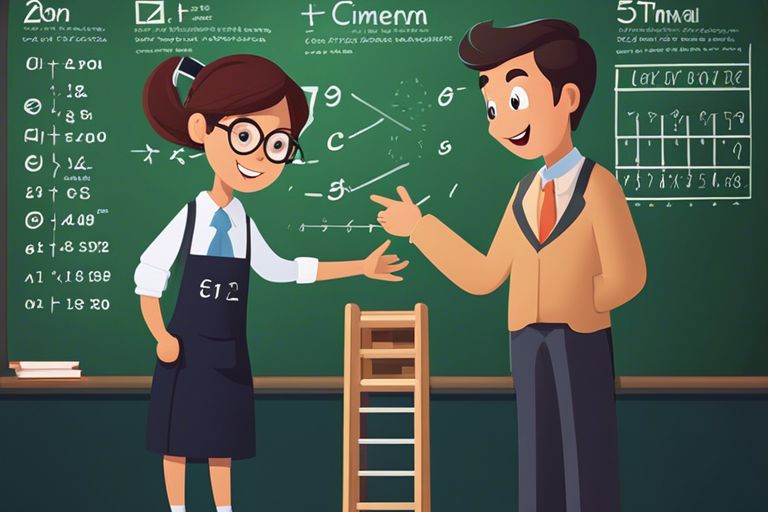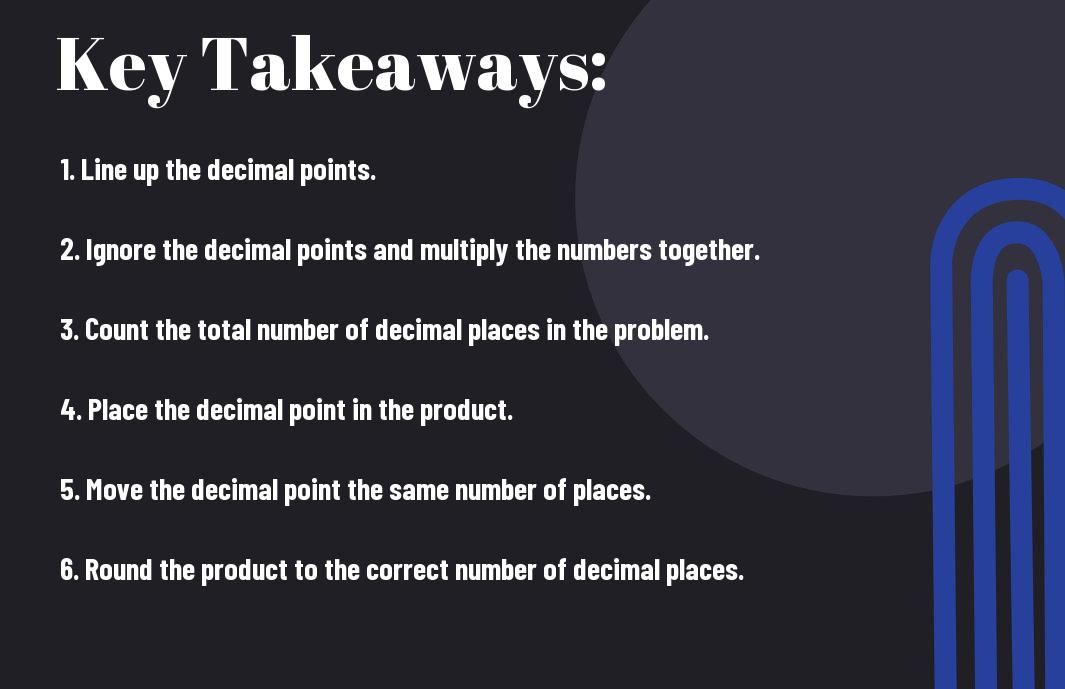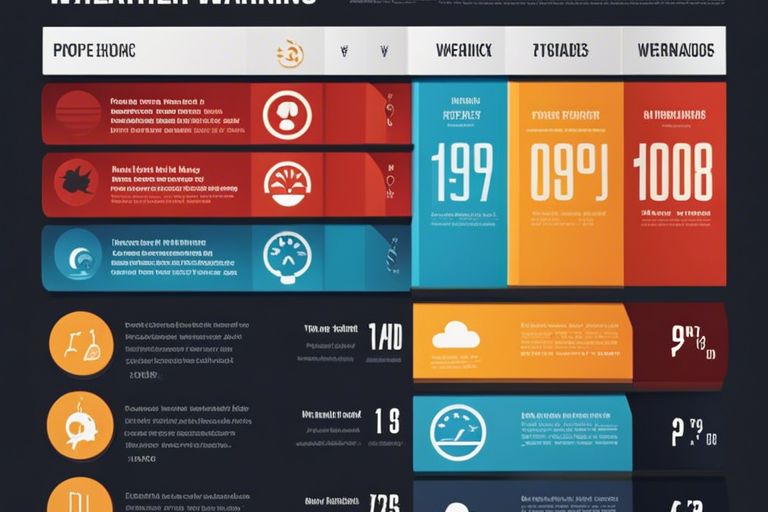Multiplying decimals is a crucial skill in mathematics, yet many students struggle with the technique. Today, I will walk you through the step-by-step process of multiplying a decimal by another decimal. Understanding the rules and techniques for multiplying decimals is essential for solving real-world problems, and it’s a skill that will benefit you in many areas of life. By the end of this post, you will have a clear grasp of the method and feel confident in your ability to tackle decimal multiplication problems.
Key Takeaways:
- Multiply the decimals as if they were whole numbers: When multiplying decimals, ignore the decimal points and multiply the numbers as if they were whole numbers.
- Count the total number of decimal places in the numbers being multiplied: To determine the placement of the decimal point in the product, count the total number of decimal places in the numbers being multiplied.
- Place the decimal point in the product: Once you have determined the total number of decimal places, place the decimal point in the product so that there are the same number of decimal places as in the numbers being multiplied.
- Use the appropriate number of decimal places in the final answer: When presenting the final answer, make sure to use the appropriate number of decimal places based on the problem.
- Practice and review: Multiplying decimals by decimals may take some practice to master, so be sure to review and practice this technique regularly.
Understanding Decimal Multiplication
The process of multiplying decimals can seem intimidating at first, but once you understand the basic principles, it becomes much simpler. The key is to remember that decimals are simply a way of expressing parts of a whole, and multiplying them involves finding the product of these parts. In this chapter, I will break down the technique for multiplying decimals, step by step, so that you can confidently tackle any decimal multiplication problem that comes your way.
Multiplying Decimals by Whole Numbers
When multiplying decimals by whole numbers, the process is similar to multiplying whole numbers. The difference is that you need to pay attention to the placement of the decimal point. To do this, simply multiply the numbers as if they were whole numbers, and then count the total number of decimal places in both the decimal and whole number. The product should have the same number of decimal places as the total in the factors. For example, when multiplying 3.2 by 5, I simply multiply 32 by 5, giving me 160. Then, I count the total decimal places in both numbers, which is one. Therefore, the product is 16.0, or simply 16.
Multiplying Decimals by Decimals
Multiplying decimals by decimals is slightly more complex, but the process is essentially the same. I start by ignoring the decimal points and multiplying the numbers as if they were whole numbers. Then, I count the total number of decimal places in both numbers and place the decimal point in the product so that it has the same total number of decimal places. For example, when multiplying 1.5 by 2.5, I ignore the decimal points and multiply 15 by 25, which gives me 375. Then, I count the total decimal places in both numbers, which is two. Therefore, the product is 3.75.
Techniques for Multiplying Decimals
While multiplying two decimals may seem daunting at first, there are a few techniques that can make the process easier and more manageable. In this chapter, I will provide you with a detailed breakdown of the methods used to multiply decimals effectively. For more information, you can also check out the blog post on Multiplication with Decimals and Some Examples on Smartick’s website.
Using the Standard Algorithm
When it comes to multiplying decimals, the standard algorithm is a tried and true method that can help you arrive at the correct answer. This technique involves aligning the decimal points and then performing the multiplication as if the decimals were whole numbers. After the multiplication is complete, I carefully count the total number of decimal places in the numbers being multiplied and place the decimal point that many places from the right in the final answer. This method may seem complex at first, but with practice, it will become second nature.
Using Estimation and Mental Math
Another effective technique for multiplying decimals is to use estimation and mental math. This approach involves rounding the decimals to the nearest whole number and then performing the multiplication with the rounded numbers. After obtaining the estimated product, I then adjust the result based on the rounding to get a close approximation of the actual product. This method can be especially useful when dealing with large decimal numbers, as it allows for a quick and rough calculation before refining the answer.
Practical Applications of Decimal Multiplication
However, understanding how to multiply decimals is not just a theoretical concept – it has widespread practical applications in various real-life scenarios. Whether it’s calculating finances or converting measurements, the ability to multiply decimals is an essential skill that can be used in everyday situations. If you want to learn more about the detailed steps of multiplying decimals, you can check out this helpful guide on Multiplying Decimals – Elementary Math – Steps And …
Financial Calculations
When it comes to managing your finances, the ability to multiply decimals is crucial. Whether you’re calculating sales tax, figuring out discounts, or determining interest rates on loans or investments, multiplying decimals comes into play. Being able to accurately perform these calculations can have a significant impact on your financial well-being.
Measurement Conversions
Another practical application of multiplying decimals is in measurement conversions. For example, if you need to convert between different units of measurement, such as meters to centimeters or liters to milliliters, you’ll need to multiply decimals. Having a strong grasp of decimal multiplication can make these conversions quick and effortless.


How Do You Multiply a Decimal by a Decimal – What’s the Technique?
Following this explanation, you should now have a clear understanding of how to multiply a decimal by a decimal. Remember to line up the decimals and then multiply as if you were multiplying whole numbers. Then, count the total number of decimal places in the factors and place the decimal in the product that many spaces from the right. With practice, this process will become second nature, and you will be able to confidently multiply decimal numbers without any hesitation.
FAQ
Q: Why would you need to multiply decimals by decimals?
A: Multiplying decimals by decimals is useful in a variety of real-world applications, such as calculating measurements, currency conversions, and determining percentages.
Q: What’s the technique for multiplying decimals by decimals?
A: The technique for multiplying decimals by decimals involves simply multiplying the numbers as if they were whole numbers, and then adjusting the decimal point in the final answer based on the number of decimal places in the original numbers.
Q: Can you provide an example of multiplying decimals by decimals?
A: Sure! Let’s multiply 2.5 by 1.5. First, we ignore the decimals and multiply 25 by 15 to get 375. Then, we count the total decimal places in the original numbers (2) and place the decimal point in our answer, which gives us 3.75.
Q: What do you do if the original numbers have different numbers of decimal places?
A: If the original numbers have different numbers of decimal places, you can adjust the placement of the decimal point in the final answer after multiplying as if they were whole numbers. Count the total decimal places in the original numbers and place the decimal point in the answer accordingly.
Q: Is there a shortcut for multiplying decimals by decimals?
A: One shortcut for multiplying decimals by decimals is to first ignore the decimals and multiply the numbers as if they were whole numbers. Then, count the total decimal places in the original numbers and place the decimal point in the answer accordingly. This can make the process quicker and more efficient.









Leave a comment